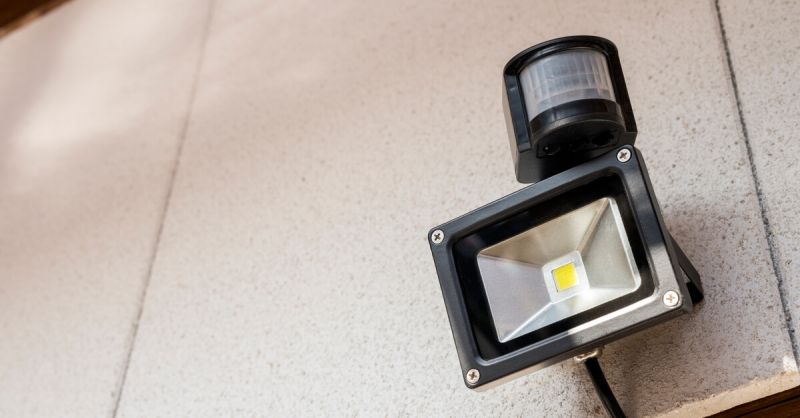
Having light in a particular space when you need it is great. But what about when you don’t need it? In order to reduce energy waste, LED motion sensor lights are a great tool. In this piece, we’re going to give a quick summary of the different styles of LED motion sensor lights and where they shine best — pun definitely intended.
Passive Infrared LED Motion Sensors
Sometimes, you want to illuminate absolutely anything that moves. Other times, you know that your driveway is fairly breezy and frequently wind pushes the bushes around. It would fairly wasteful, not to mention annoying for your garage light to practically turn into a strobe light due to a change in the weather. A passive infrared LED motion sensor is best for when you want to illuminate warm-blooded creatures — like people or animals. These sensors detect infrared radiation — aka heat. Whenever a person, creature, or other heat-expelling specimens walk up to your driveway, you want to hit them with some light. If that sounds like what you need, you probably want to consider installing a passive infrared LED motion sensor light. (We still haven’t tested this on alligators, but we’ll get back with you.)
Active LED Motion Sensors
Let’s say that you want a sensor that can see absolutely any movement in front of it. That’s all well and good, but what happens when the lights go out? Enter active LED motion sensors. Using a variety of sensors ranging from ultrasonic to microwave and tomographic waves, active sensors project waves across a broad space. If the signal bounces back to the signal different from the way it was when it was emitted, this trips the sensor. These sensors are best used indoors because of their heightened sensitivity.
Dual Technology LED Sensors
Having to remember to turn off the lights at the end of the day can be tricky for a busy office. Figuring out whether or not you’re the last person in an office where many people have door access is a chore. Instead of this, many offices will use a dual technology sensor system. This sensor uses a combination of different types of sensors in order to reduce the likelihood of false tripping. This is especially handy if you’ve ever seen quietly working after hours and the lights have turned off on you. The combination of sensor types makes remembering to turn out the lights a thing of the past.
Not sure which LED sensors are the best for your needs? Consult the LED lighting professionals from Tulsa’s own Lighting Inc. today.

